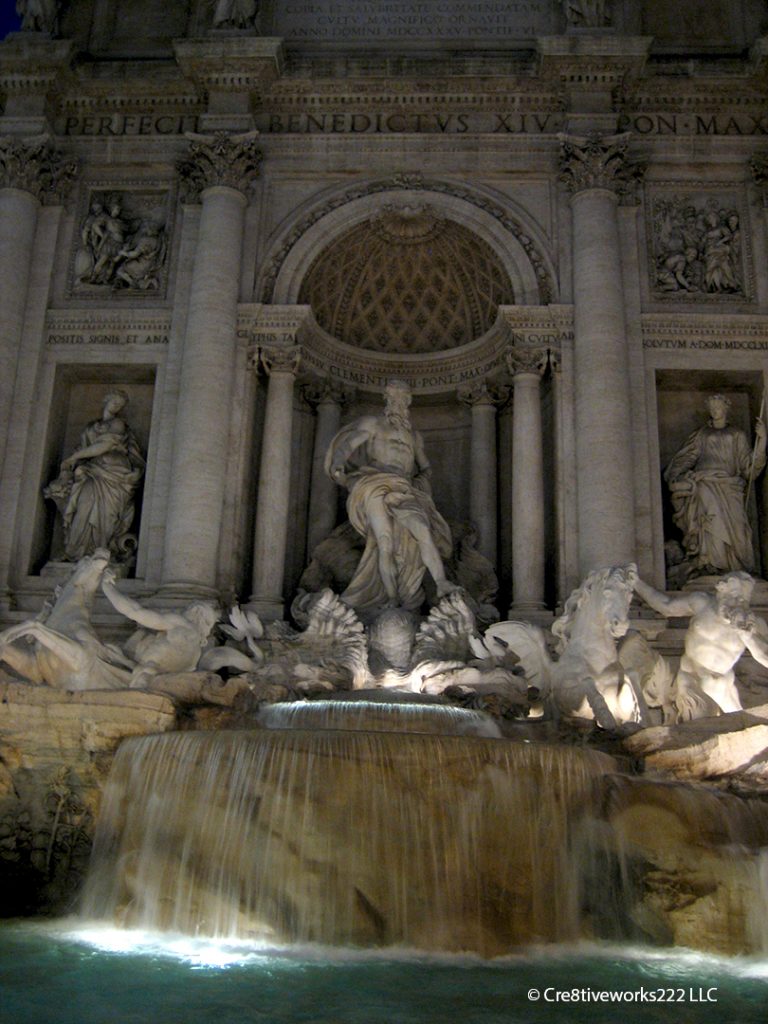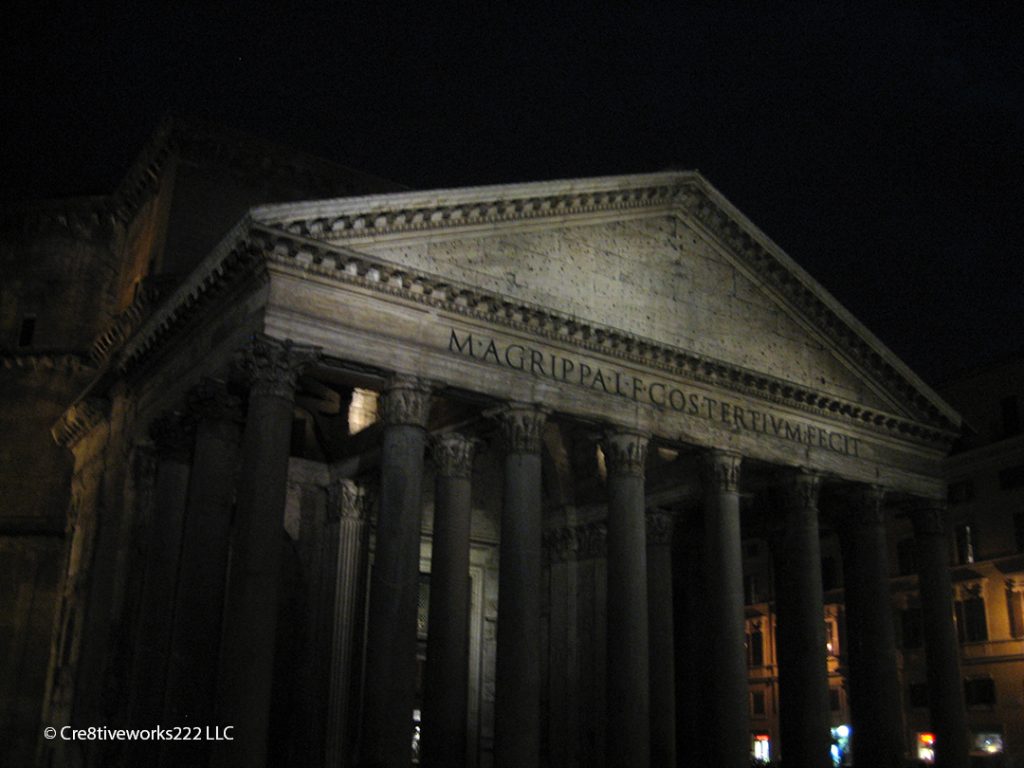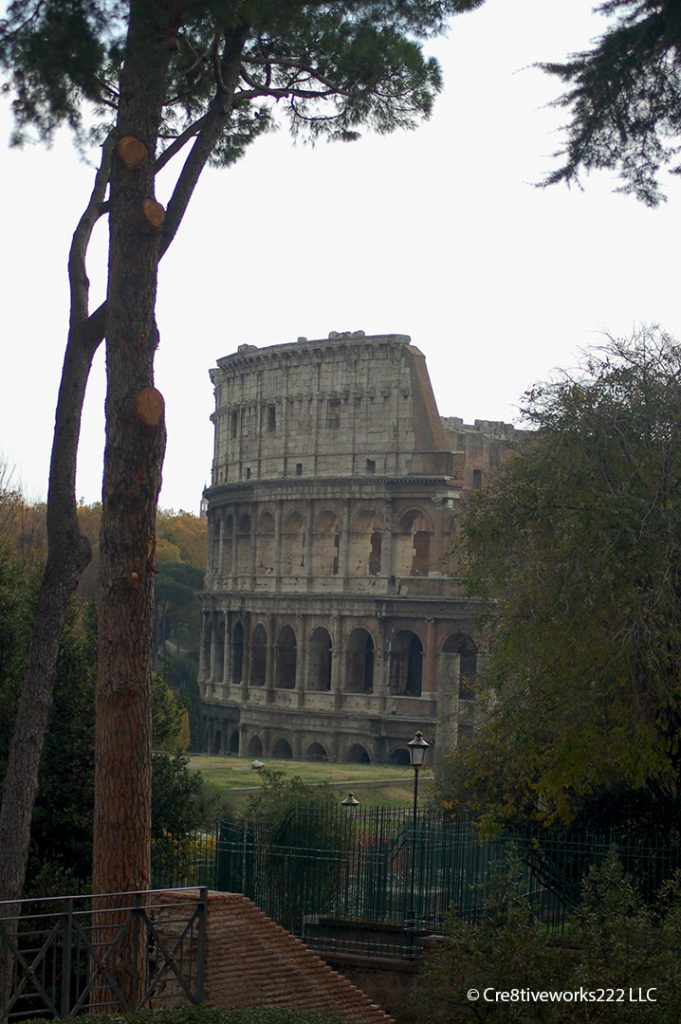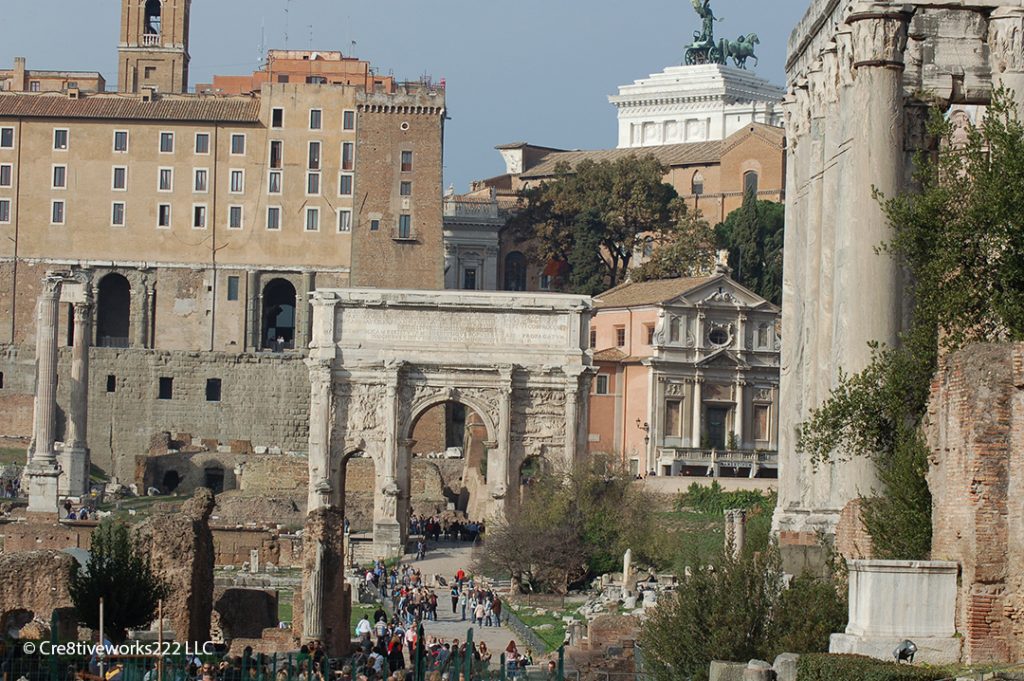On our first trip to Italy, we decided to make our final stop in Rome before flying to Greece for a few days. We liked the smaller more intimate towns in Italy but wanted to experience the many historical sites that Rome has to offer. I’ll share four of the sites, but we found that Rome has so much more to offer, that we went back twice more to explore, including the Vatican City.
We only had a few days to spend in this busy city so we mapped out where we wanted to go and what we wanted to see. We did a lot of walking and didn’t take cabs unless we absolutely had to and that’s how we usually like to travel. We see our best sites when we wander off the main streets.
One of the first sites was the Trevi Fountain. It’s not nearly as old as the other sites I’ve shared but still a must-see when in Rome. The fountain was first designed by Italian architect Nicola Salvi and is the largest Baroque fountain in Rome. Work began in 1732 and completed in 1762. The fountain is in the middle of a small neighborhood and typically is very crowded so watch for pickpockets and keep your valuables close and put away. There is a tradition of throwing a coin in the fountain with your right hand over your left shoulder which will ensure your return to this amazing city in Italy.
As we walked the cobblestone narrow streets we didn’t know what to expect with the next site. As we rounded a corner in the middle of Rome there it was in front of us. One of the most amazing buildings still standing as it did so long ago. The Pantheon was first built as a temple to all the gods of ancient Rome. The building is circular with a porch or entrance of large granite Corinthian columns. More than two thousand years old, the Parthenon’s coffered concrete dome with a central opening is still the largest unreinforced concrete dome. It is an amazing building that has been used as a Roman Catholic Church since the 7th century.
The next amazing site is the Roman Colosseum, which is the largest amphitheater in the world. Construction began in 70AD and could hold 50,000 to 80,000 spectators of gladiator contests and mock sea battles. The wooden floor would be removed and flooded for the sea battles. You can still see the many passageways where the animals and gladiators would be transported. This portion of the Colosseum was closed when we visited, but it is open to the public. Again, there are a lot of steps to climb and walking but it is well worth it. Be a bit careful of the tourist traps around the Colosseum selling photo opportunities and souvenirs.
The final site, for now, was the Roman Forum. To get the most of these ruins either take a guidebook along or rent the guided phone tour so you know what you are looking at and where you are going. For centuries the forum was the center of public life, including commerce, business, administration, and justice. The main sites that are still visible include the Temple of Saturn, the Arch of Titus, The Arch of Septimius Severus, and the Temple of Caesar just to name a few. Make sure to bring good walking shoes as the ground and paths are rough and there’s a lot of walking.
Enjoy our photos and thoughts and post your tips, photos, and must-sees in the fabulous, fast-paced city.





